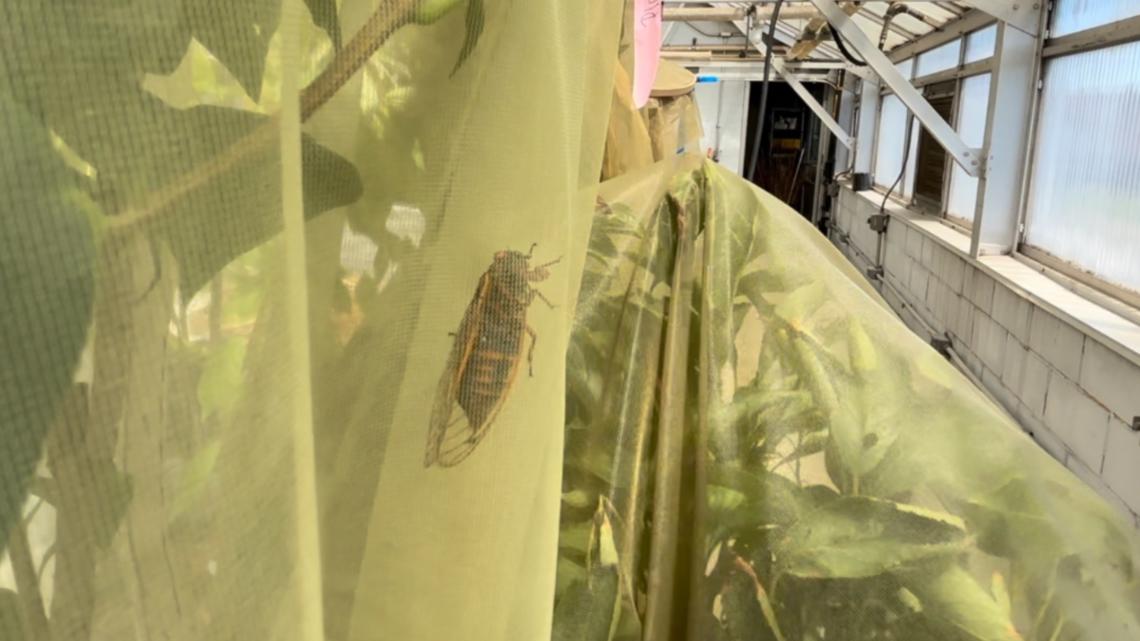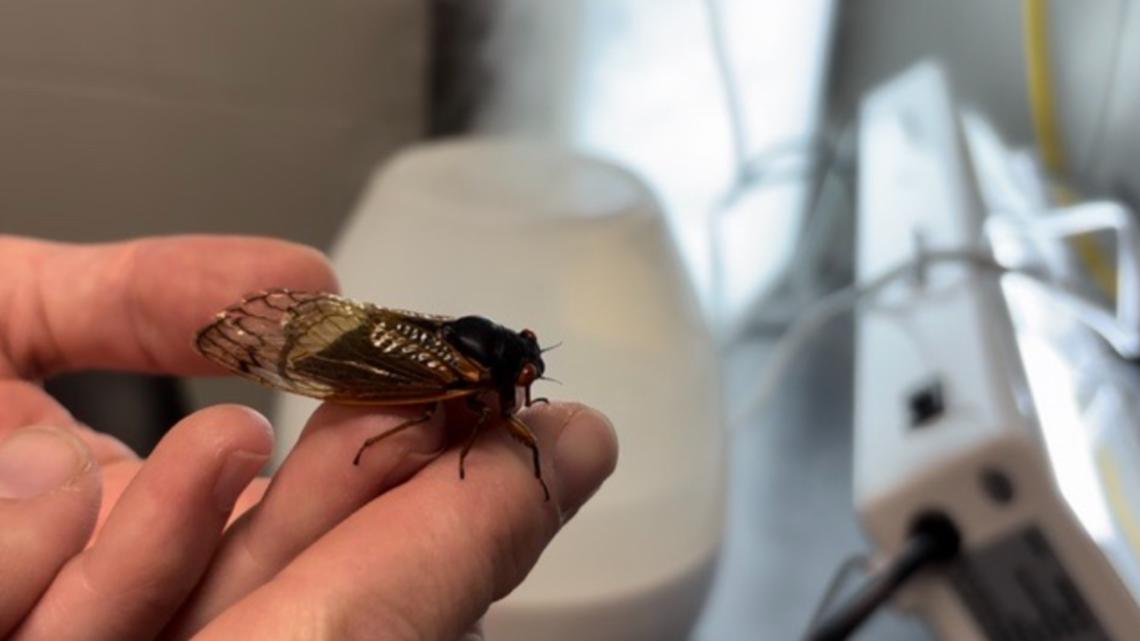ST. LOUIS — What started as a handful of sightings of a parasitic fungus turning St. Louis area cicadas into hypersexual "zombies" has cascaded into thousands.
The fungus was confirmed in Missouri in late May, with a handful of citizen scientists cataloging infected cicadas south of St. Louis. However, St. Louis University scientists researching cicada mating habits recently caused fungal reports to mushroom. The researchers found a cicada population near Eureka where thousands were infected, nearly one-third of the entire population.
READ MORE: Rare parasitic cicada fungus confirmed in Missouri, turns the insects into hypersexual 'zombies'
The population was found between the Chubb Trail and Prairie Loop along the Meramec River south of Sherman.
"I was struck by how many males we caught were infected," said Kasey Fowler-Finn, associate professor of biology at SLU. "It may have been a little bit less than [one-third] because we were thinking some were fungal infected while they were actually bird-damaged, but there were a lot of ones with the fungus."


Fowler-Finn, who specializes in ecology and mating behavior, and her colleagues collected cicadas from the area for an in-depth study on how the insects' mating habits and calls affect other animals and insects.
The study was launched after someone asked the team how the periodical cicada emergence affects the team's research on the mating habits of other wildlife. Looking deeper into the subject, Fowler-Finn hypothesized the droning sound of cicada mating calls may be drowning out the mating calls of other animals, forcing adaptations and adjustments.
"We started studying how the presence of this large influx of songs from cicadas affects signaling in other animals," Fowler-Finn said. "We're looking at, for example, how birds maybe change their signaling patterns in response to cicada emergence."
A small problem is complicating research: Not only do separate cicada species emit different mating calls, but cicadas infected with the parasitic fungus exhibit both male and female mating rituals. For example, the team recently had an infected male cicada in the lab exhibiting male cicada mating call behavior one day. The next day, he started the wing-flicking, which only female cicadas tend to do. The day after that, his back end was clearly swollen from the fungus.
"It's kind of hard to get ahead of, like a game of cat and mouse," Fowler-Finn said. "We really have to keep track of who is infected or not because we need to know whether the signals sound funny and whether we're seeing behaviors that are driven more by the fungus than the questions we're trying to ask."


Top St. Louis headlines
Get the latest news and details throughout the St. Louis area from 5 On Your Side broadcasts here.



